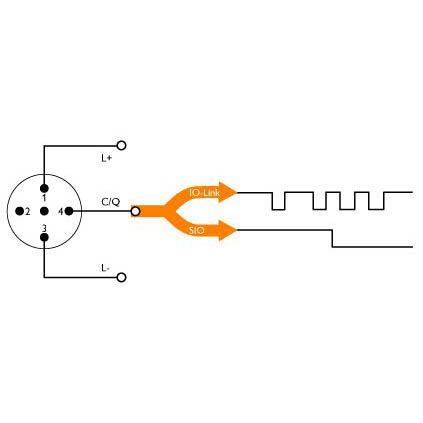
How does the IO-Link communication interface of WIKA’s pressure switch PSD-30 actually work? IO-Link is a point-to-point connection (i.e. not a new field bus) between sensor/actuator and a field bus master such as a PLC.
The supply of the field device (pin 1 and pin 3) and of the signal transmission (pin 4) is using a 3-conductor connection line, which is typical and standardised at the field level. Signal transmission initially takes place conventionally, that is, without IO-Link in the so-called SIO mode (standard IO mode). Only after a so-called “wake up” is performed via the IO-LInk master using a defined command, the digital IO-Link communication is started.
Standardised data packets are then exchanged bidirectionally via a serial protocol. Configuration parameters can now be transmitted centrally to the sensor and measured values and diagnostic data from the sensor to the control system. The IO-Link functionality of the sensor is represented in a device description file (IODD – IO-Link Device Description, xml file) and must be saved to the IO-Link Interpreter Tool used.
Technical information for IO-Link: Data rate: 4.8 / 38.4 / 230.4 kbaud Max. cable length: 20 m, unshielded Typical cycle time: 2 ms Connection type: point-to-point, serial, bidirectional, half-duplex Standard connectors: M5, M8, M12
For further details on IO-Link visit the IO-Link homepage.

